Opening
Odeon Theatre and Parcours des Erinnerns
The Vienna Project opened on 23. October 2013 to an overflowing audience at the historic Odeon Theater in the Leopoldstadt District, Vienna’s most diverse district. Built by a Jewish architect, Karl König in 1890, this ornamental building once housed Austria’s International Corn Market.
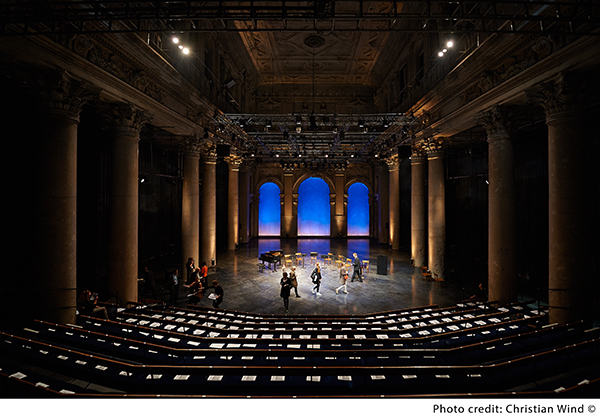 Starting at 18:00, the program began with a catered reception by a Viennese catering company, Neni, with wine from the Martinshof vineyard. The reception allowed guests and the press to meet with project team members and attending dignitaries over tasty au d’oeuvres. Starting at 19:00 , we began our formal program led by Master of Ceremonies, Dr. Georg Traska. The program reflected representation of the multiple victim groups, using music, poetry, performance, and video to create a memorable evening of remembrance.
Starting at 18:00, the program began with a catered reception by a Viennese catering company, Neni, with wine from the Martinshof vineyard. The reception allowed guests and the press to meet with project team members and attending dignitaries over tasty au d’oeuvres. Starting at 19:00 , we began our formal program led by Master of Ceremonies, Dr. Georg Traska. The program reflected representation of the multiple victim groups, using music, poetry, performance, and video to create a memorable evening of remembrance.
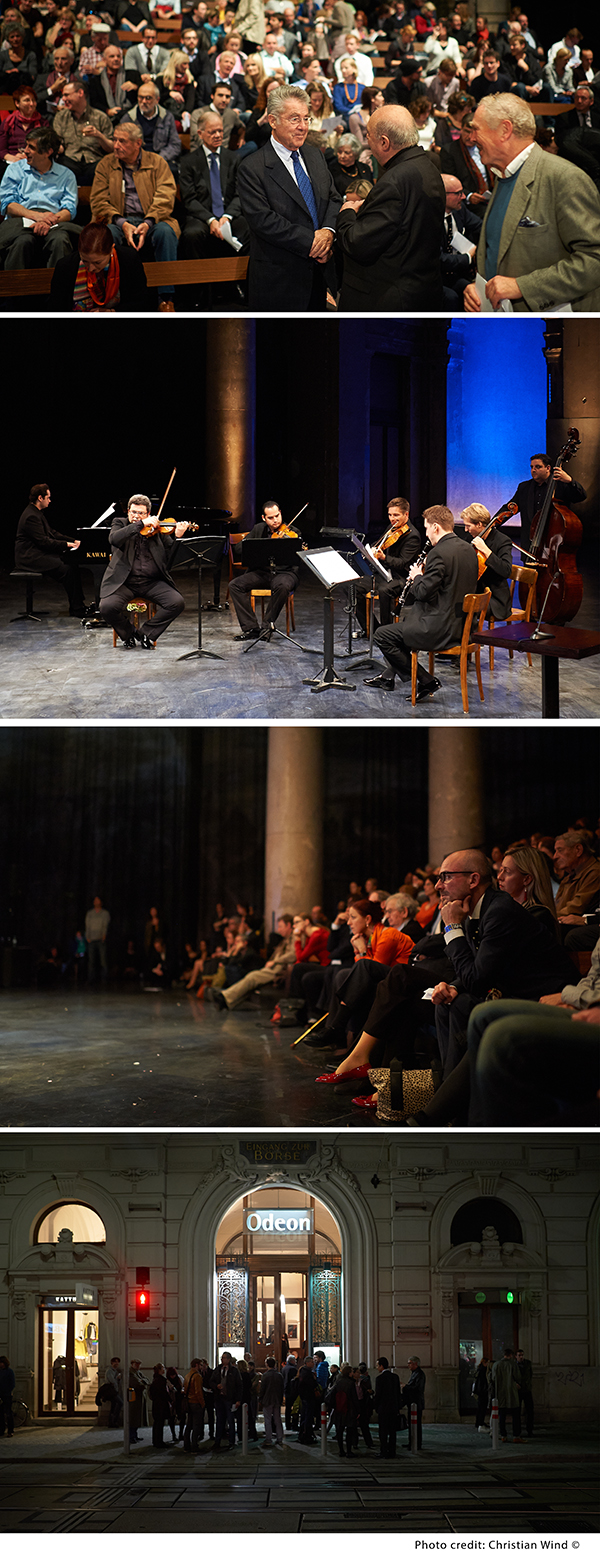 President Heinz Fischer attended opening events, joined by other distinguished Austrian officials. Introductory remarks from project president, Karen Frostig, were followed by brief statements
President Heinz Fischer attended opening events, joined by other distinguished Austrian officials. Introductory remarks from project president, Karen Frostig, were followed by brief statements
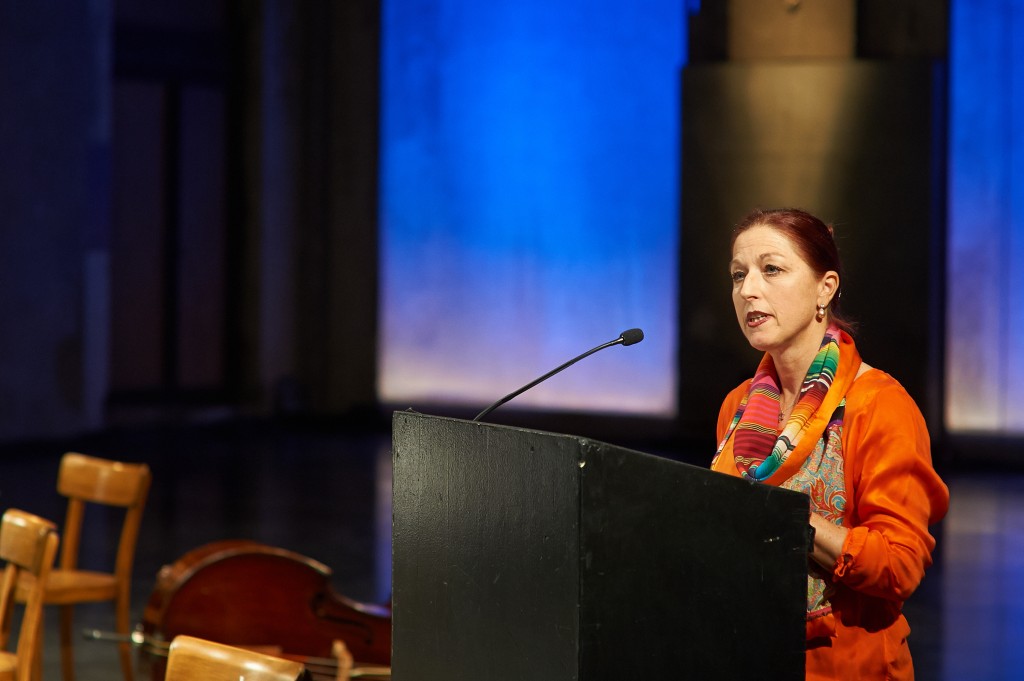 Welcoming remarks by Hannah Lessing Photo credit: Christian Wind ©
Welcoming remarks by Hannah Lessing Photo credit: Christian Wind ©
delivered by Hannah Lessing, Secretary General of the National Fund, Dr. Andreas Mailath-Pokorny, Executive City Councillor for Culture and Science of the City of Vienna, and Clemens Hellsberg, Chairman of the Vienna Philharmoniker. The featured program highlighted The Wiener Philharmoniker’s well known ensemble, “The Philharmonics” playing music pertinent to this period, interspersed with readings by the internationally celebrated Jewish novelist and poet, Robert Schindel, and the acclaimed Roma actress and filmmaker, Sandra Selimovic.
Parcours des Erinnerns
“With the central question “what happens if we forget to remember”, historical memory comes into the phenomenal horizon of individual memory. The student’s works of art deal with the questions of ephemerality, fleetingness and the persistence/lingering of memory. Linguistic metamorphosis plays with simple sentences and word orders with respect to the variety/multiplicity/diversity of the observer. What calls to mind recollections of past things, experiences and things not experienced – what can linger in the subconscious and be recalled later? The artistic propositions transform the ethical demand of historical memory into a creative process.” –Georg Traska
Mit der zentralen Frage, was passiert, wenn wir vergessen uns zu erinnern, gerät das historische Gedächtnis in den phänomenalen Horizont individueller Erinnerung. Die Arbeiten der Studierenden befassen sich mit Fragen nach der Momenthaftigkeit, Flüchtigkeit und dem Bleibenden der Erinnerung. Sprachliche Verwandlungen spielen einfache Sätze und Wortfolgen in Hinblick auf die Vielfalt der BetrachterInnen durch. Was ruft Erinnerungen an Vergangenes, Erlebtes und nicht Erlebtes wach – was kann hängenbleiben und später erinnert werden? Die künstlerischen Auseinandersetzungen verwickeln den ethischen Anspruch des historischen Gedächtnisses in kreative Probleme.–Georg Traska
At 20:30, guests were invited to walk to the nearby Danube Canal to witness a “Parcours des Erinnerns/Parkour of Remembrance,” with projections, objects and performative Interventions around the Danube Canal. Experimental video installations, developed by students at the University of Applied Arts, Transmedia Department under the direction of Elisabeth Wildling and Niki Passath, was on view. Coordinated by Executive Producer, Sydney Ogidan, the eight video installations included lively projections on bodies in motion and on a boat traveling up the canal. The different video presentations used innovative techniques to highlight the project axiom and other related text dealing with concepts of racism and freedom.
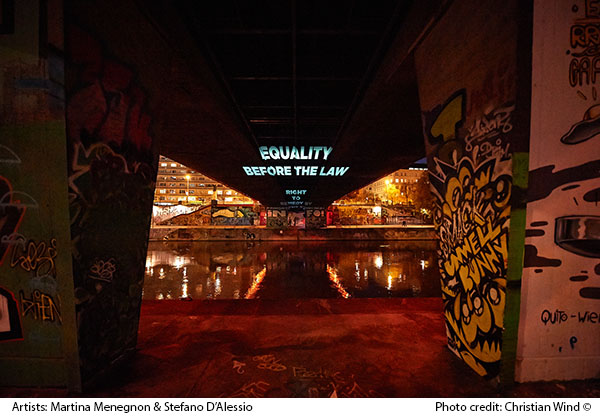 Using additional experimental technologies, language taken from the Universal Declaration of Human Rights–adopted by the UN General Assembly in 1948 in response to the atrocities committed in WWII–was projected onto the underside of the Salztorbrücke to complete the metaphor that links the past to the present: “What happens when we forget to remember?”
Using additional experimental technologies, language taken from the Universal Declaration of Human Rights–adopted by the UN General Assembly in 1948 in response to the atrocities committed in WWII–was projected onto the underside of the Salztorbrücke to complete the metaphor that links the past to the present: “What happens when we forget to remember?”
![boat[2]600](http://theviennaproject.org/wp-content/uploads/2013/11/boat26001.jpg) Projected onto Salztorbrücke, the walls of the canal, nearby buildings, a boat traveling up the canal, and bodies in motion, the text read as a series of transitory poems, interlaced with the phrase “to not forget as we remember.” Composed as a couplet in ten languages–Deutsch, Yiddish, Romani, Slovenian, Polish, Russian, Serbo-Croatian/Bosnian, Turkish, Hebrew and English–the words mingled with the current and the street traffic, as an ephemeral event.
Projected onto Salztorbrücke, the walls of the canal, nearby buildings, a boat traveling up the canal, and bodies in motion, the text read as a series of transitory poems, interlaced with the phrase “to not forget as we remember.” Composed as a couplet in ten languages–Deutsch, Yiddish, Romani, Slovenian, Polish, Russian, Serbo-Croatian/Bosnian, Turkish, Hebrew and English–the words mingled with the current and the street traffic, as an ephemeral event.
“Vienna Project Poster” and “Parcours des Erinnerns Map” designed by graphic artist, Natasa Siencnik
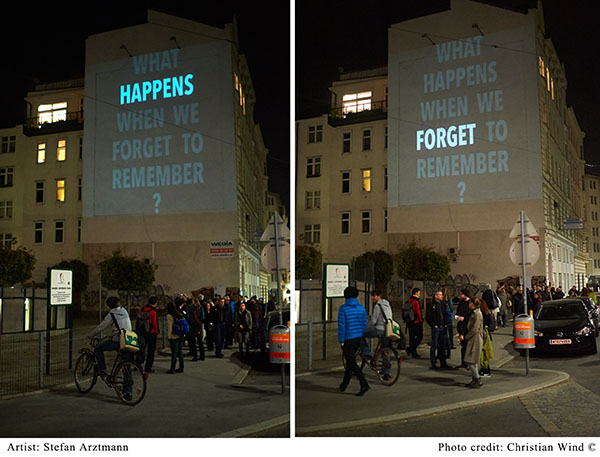
![schindel[1]](http://theviennaproject.org/wp-content/uploads/2013/05/schindel11.jpg)

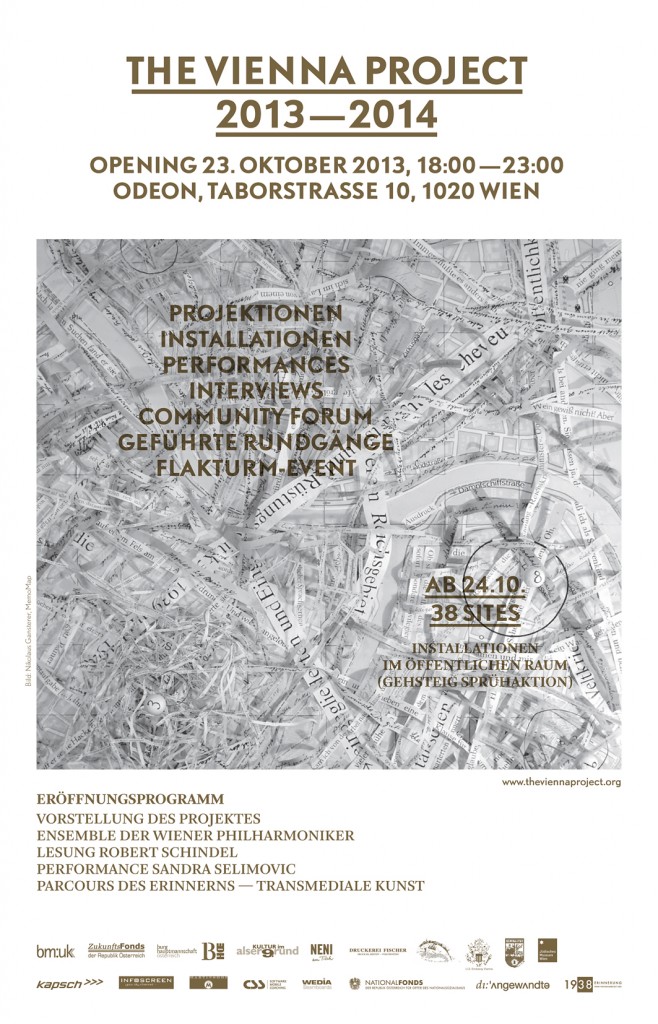
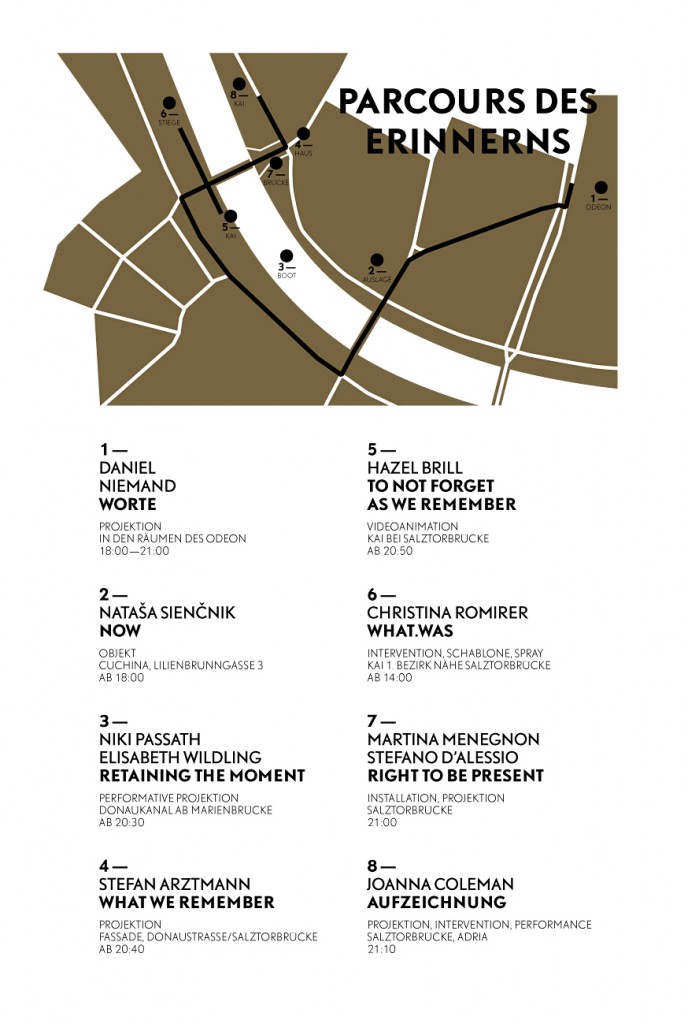




Comments on this entry are closed.